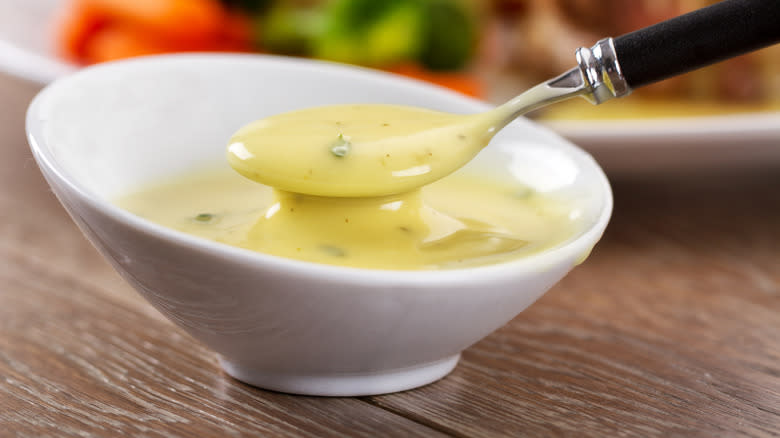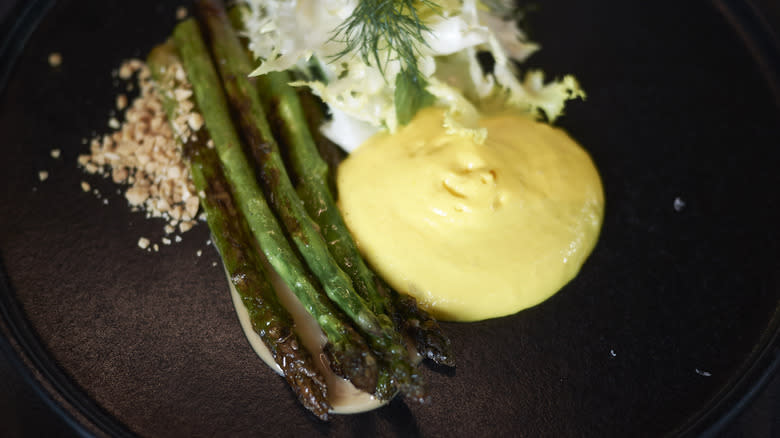How Béarnaise Sauce Got Its Name

The word "sauce" itself comes from the Old French language referring to a condiment for meat and can be traced back to the 14th century. Today, we're deep-diving into the history of béarnaise sauce, one of the most classic (and ostensibly oldest) five "mother sauces" of French cuisine.
Per the lore, béarnaise sauce was named after its creator, French chef Jean-Louis Françoise-Collinet. However, even this aspect of the story is debated. Other sources argue that the chef's name was Jean-Louis Collinet or Jules Colette. According to some historians, Collinet created the sauce for the opening of the restaurant in 1836. The restaurant was called Le Pavillon Henri IV and was located in Chateau Neuf just outside of Paris, a region famously home to the French royals of the 17th century.
Either way, the story goes that Collinet was working at a restaurant that used to be the residence of Henry IV (1553-1610), the first Bourbon king of France. (Or, maybe it was just near where the king once lived. Again, debated.) As a ruler, he reunified France after the Wars of Religion (1562-1598) and brought great order and prosperity to the country. Behind the scenes, Henry IV was a renowned gourmand and was born in the town of Béarn in the Pyrenees mountains in Southwestern France, and when Collinet created the sauce, he named it in the former king's honor.
Read more: Vinegar Cooking Hacks You'll Wish You Knew Sooner
Class And Panache (Literally) Fit For A King

If you've never worked with it before, béarnaise sauce is a fat-in-water emulsion of egg yolks and melted butter in white wine vinegar (or a reduction of dry white wine and vinegar) amped up with shallots and anise-forward tarragon, which are responsible for the sauce's distinctive taste. The sauce traditionally comes together in a double boiler, but technically you can make it in five minutes in a blender (although more traditionally-minded foodies might wince at the sight).
Some folks also add chervil and minced chives. You can even add a dollop of miso paste for an umami kick. Customizability is the name of the game with béarnaise -- which is itself thought to be a variation of the simpler hollandaise sauce. Unlike hollandaise, which uses lemon juice for acidity, béarnaise sauce uses white wine vinegar and swaps the cayenne pepper for cracked black pepper. The result is a bright, savory, sharp flavor that cuts through rich, fattier meats. Ultimately, béarnaise sauce could be thought of as hollandaise sauce with more ingredients.
Even at its conception, the sauce was allegedly such a hit that, according to the story, every chef at Le Pavillon in the 19th century tried to say that they had been its original inventor. Whatever the case, béarnaise sauce took France by storm and started cropping up in U.S. cookbooks after World War II. Today, it remains a common staple in American steakhouses.
Read the original article on Tasting Table.

